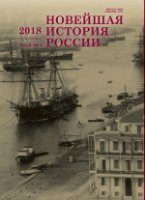Противолодочная оборона военно-морских сил Германии и Финляндии в Финском заливе в 1943 г.
Antisubmarine Warfare of the German and Finnish Navy in the Gulf of Finland in 1943
Author(s): M. E. MorozovSubject(s): Military history, WW II and following years (1940 - 1949), Fascism, Nazism and WW II
Published by: Издательство Исторического факультета СПбГУ
Keywords: World War II; 1943; struggle at sea; submarine warfare; anti-submarine warfare; maritime transport;
Summary/Abstract: The article explores actions taken by the German and Finnish Navies for improving anti-submarine warfare (ASW) in the Gulf of Finland in 1943. After active operations by Soviet submarines in the Baltic Sea in 1942, and with Hitler’s approval in the spring of 1943, the Axis ASW system in the Gulf of Finland was radically reorganized. The main efforts were concentrated on the Naissaar-Porkkala frontier, the basis of which was a double network fence, exposed in the narrowest place of the bay from shore to shore and to full depth. The second frontier, the Gogland, was established in the immediate vicinity of the advanced Soviet maneuvering base on Lavensari island, 100 miles east of the first line. In the middle of the Gulf, Finnish and German naval search groups constantly operated, supported by anti-submarine aircraft. Two of the three submarines of the 1st echelon of the Baltic Fleet, deployed between May 7 and 31, were sunk when they tried to penetrate the enemy's ASW, while the third was forced to return. Between July 26 and August 13, a second breakout attempt was made, but both submarines deployed were sunk by mines. On August 28, the commander of the Leningrad Front, Colonel-General L. A. Govorov, decided to stop further attempts at breakout. Thus, the enemy was able to protect communications from attacks by Soviet submarines for a year and a half before Finland left the war. This had a negative impact on the course of the Second World War in Europe, since it facilitated the supply of the Swedish economy with the Swedish iron ore and rear support of German military forces in Northern Finland and near Leningrad.
Journal: Новейшая история России
- Issue Year: 8/2018
- Issue No: 25
- Page Range: 854-867
- Page Count: 14
- Language: Russian

